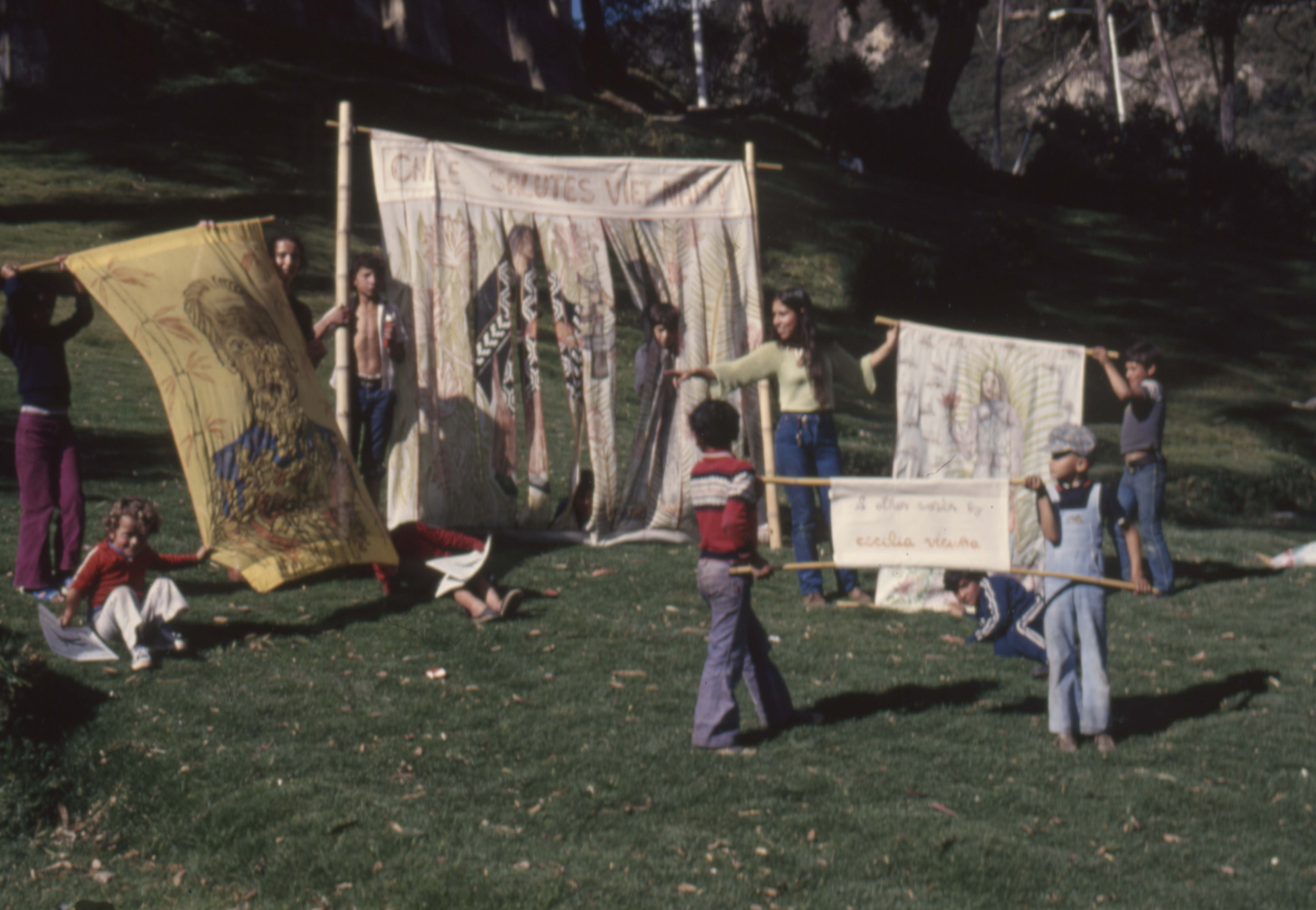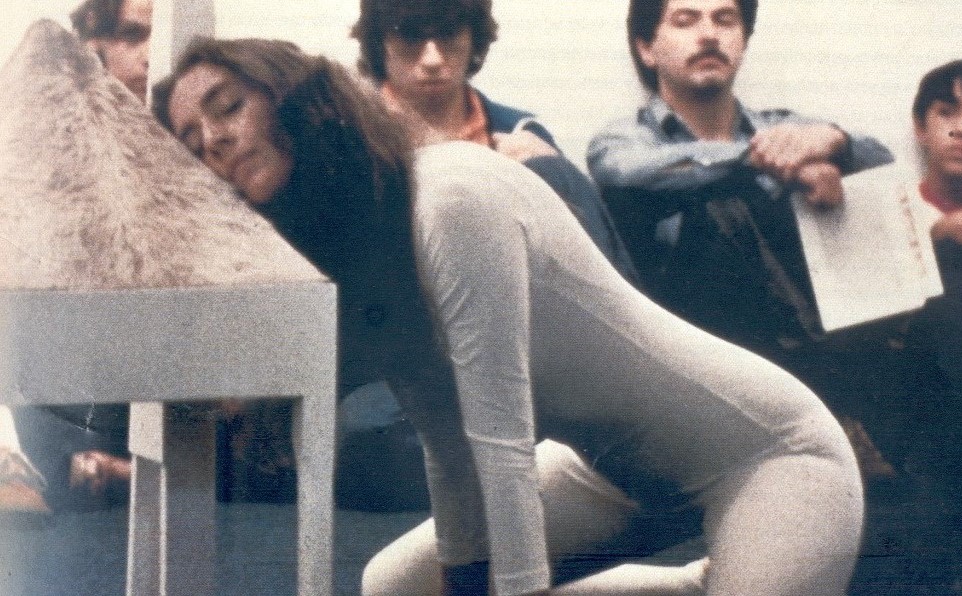Artistic Teaching: an Act in the Present
06/06/2022
That relationship between teaching and art is also apparent in her approach to art history. Far removed from avant-garde positions that suppose a break with the past, Paksa would define artists as “devourers of images” who are able to build upon the appropriation and parodying of elements taken from visual culture.
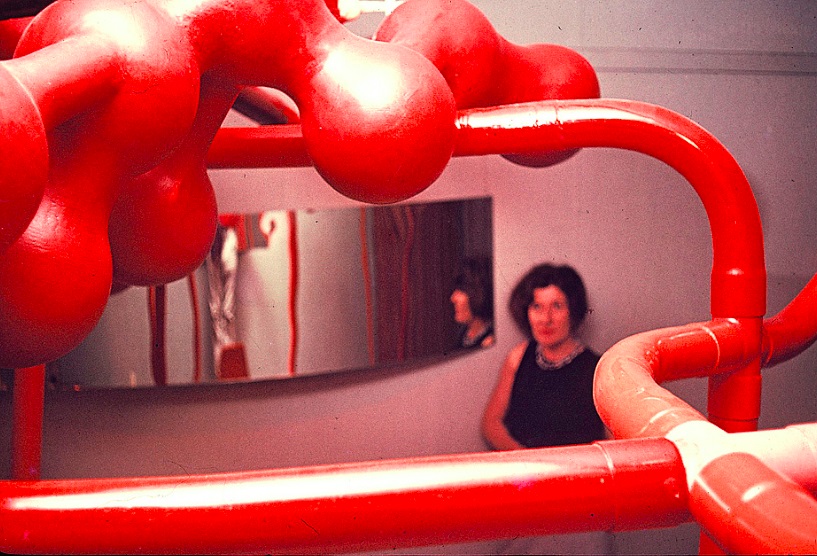
In October 2001, Margarita Paksa (1932-2020) presented a conference on art and education at the National University of Rosario, in Argentina.1 Taking place just a few weeks after the attacks in New York City, the urgency of the events that were occurring led to the artist rewriting the first part of her conference. In those opening lines, she wondered: How was it going to be possible to resist the rise of fundamentalisms and ensure that they did not curb dissidence? How could we continue with civil disobedience against injustice, without being stopped by racism and fear? The text, created amid the vertigo of epochal changes, represented the adopting of a position, a political posture, in which artistic education was perceived as inseparable from a desire to transform the present.
Trained in drawing and sculpture at the end of the 1940s, Margarita Paksa participated in the Argentinian avant-garde art scene in the 1960s, which was centered around the activities that took place in the cultural hub of Calle Florida, in Buenos Aires. Galleries such as Bonino and Lirolay, and the Torcuato Di Tella Institute (ITDT), gathering places for the local art scene,2 were all located within those few “crazy blocks.” Her artistic production spanned more than seven decades of experimentation that included sculptures in metal and iron, drawing and painting, plastic, neon, and works made with computers and the internet, among other media. This diversity of materials and techniques was combined with an avant-garde posture, expressed through experimentation and political engagement, together with an unwavering commitment to artistic education, which she developed both in unofficial spaces — such as drawing workshops in poor neighborhoods — and in established institutions — such as the National School of Fine Arts.
In this text, I will address the relationship between the experimental proposals developed in her work as an artist and her pedagogical activity, while presenting an overview of her artworks and writings. That relationship between making art and teaching was marked by a common approach which makes it impossible to separate, in any study of Margarita Paksa, those two activities and her involvement in the various political contexts that she experienced. As we will see, this dimension was already apparent in the 1950s and 1960s, but it would extend into the rest of her work, over the following years.
Education, the Avant-Garde and the Present
That relationship between teaching and art is also apparent in her approach to art history. Far removed from avant-garde positions that suppose a break with the past, Paksa would define artists as “devourers of images” who are able to build upon the appropriation and parodying of elements taken from visual culture.3 Both in her classes and in her work, she would employ artistic references in order to engage in acts of transformation, of subversion of the senses. In what might be seen as a founding gesture that would define her relationship with the past, at the end of the 1950s the artist produced a series of early ceramics under the title The Abduction of Europa, which radically modified the traditional ways in which this myth has been depicted. In one of her sculptures, it is no longer Zeus, disguised as a bull, who abducts Europa — as the original story tells it — but instead she herself becomes a kriophoros, carrying the animal on her shoulders, as if she were going to sacrifice it as an offering to the gods. In this way, that mythological iconography, repeated by artists such as Rubens and Rembrandt, is re-appropriated and transformed into a feminist statement: Zeus is now held aloft by Europa, no longer the god turned into a bull who carried away the Phoenician princess.
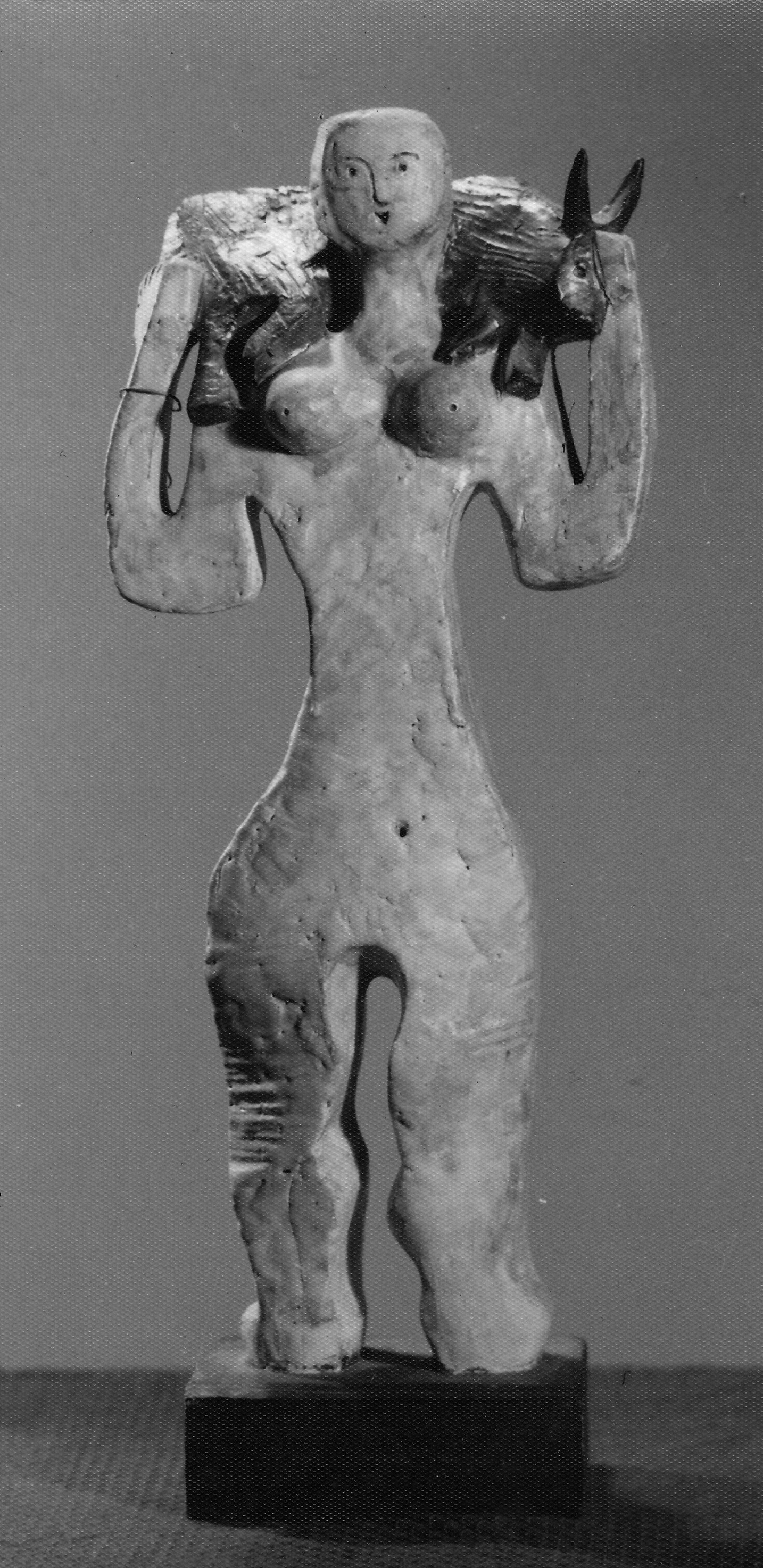
It is not only that relationship with the past which allows us to understand this artist’s unique way of conceiving the avant-garde. While it is possible to distinguish an anti-institutional position among the artists of the late 1960s — expressed in a powerful denunciation of institutions for exhibition and legitimization, including the ITDT itself or competitions such as the Braque Prize4— Paksa demonstrated a completely different approach to the formal spaces of education. For example, she was repeatedly involved in the struggle for university recognition of artistic education, beginning during the period ushered in by the Liberating Revolution, in 1955, and ending with the creation of the National University Institute of Art, in 1996.5 In contrast with those institutions that had been accused of being complicit in the imperialist policy of the United States, education was seen as a field that had to be defended against the practices of government censorship, expressed in dramatic moments such as the Night of the Long Batons, when groups of police officers burst into the Public University in 1966, during the military dictatorship of Juan Carlos Onganía.6
If we understand that both art and education were seen as spaces from which reactionary attacks had to be confronted, it is possible to understand the continuity of a commitment to the present that runs through Paksa's life and work. I refer not only to how she encouraged reflection on politics and contemporary art in her classes, conceiving education as a way of intervening in the immediate context, but also the way in which various pedagogical devices are visible in her works. During the 1970s, for example, Paksa produced a series of maps that she titled Diagramas de batallas [Battle Diagrams], in which cartographic images of regions and cities in Argentina are superimposed over phrases such as “violence,” “justice” or “food.” In these cartographical works, it is possible to distinguish areas and military detachments that were the object of attacks by the guerrilla group Ejército Revolucionario del Pueblo7 [People’s Revolutionary Army - ERP]. Paksa refers to the assaults in the town of La Calera, Córdoba, in 1970, the attack on the 601st Arsenal Stores Battalion in Monte Chingolo, in December 1975, on the 121st Communications Battalion in Rosario, or in the province of Tucumán, where the ERP extended its sphere of operations.8
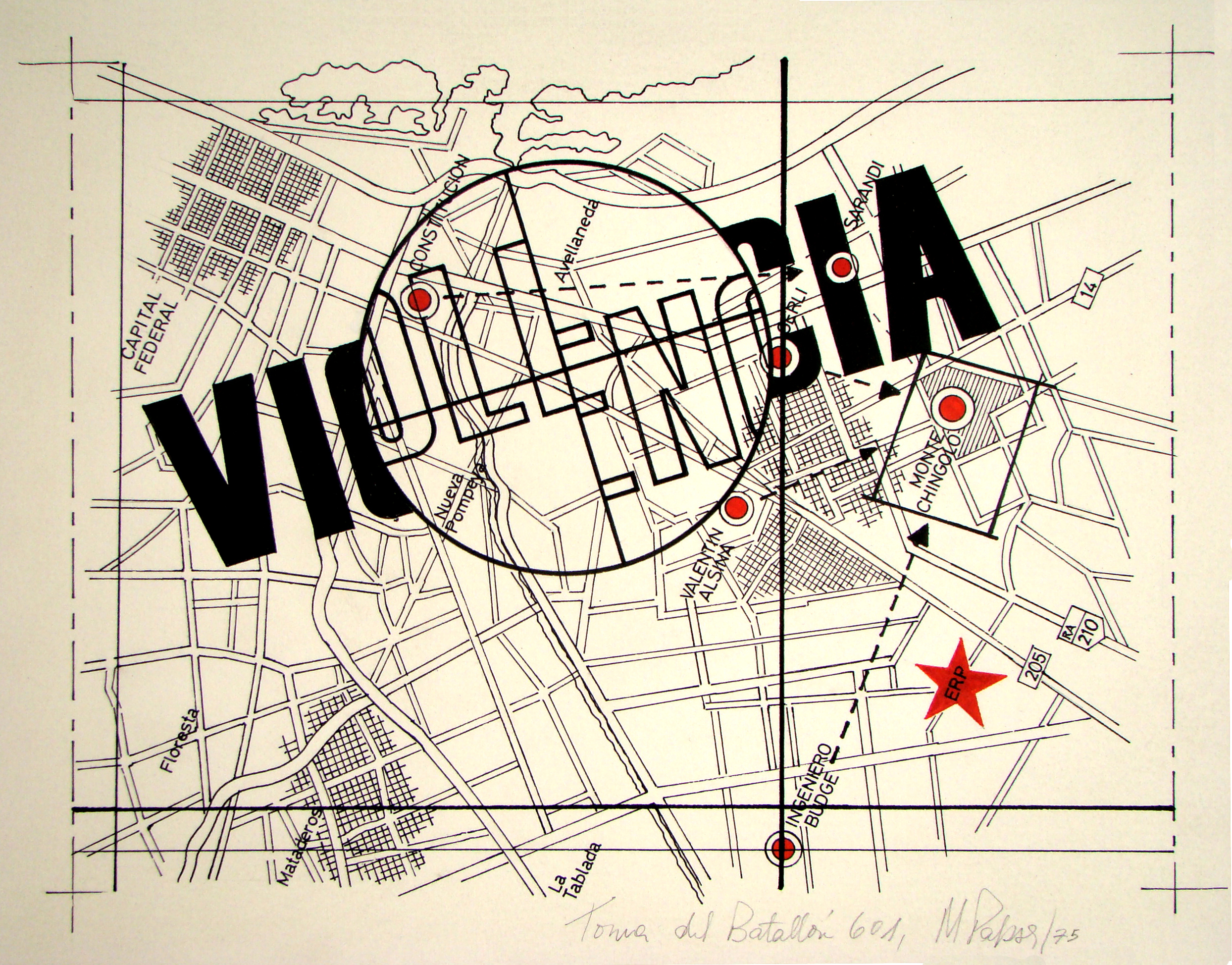


These maps charted the armed violence in the country at the time the events were taking place.9 They are works that were inserted into contemporary events and which, at the same time, predicted actions to follow, almost as if they were calls to action for future attacks on military units. In these works, recent history is incorporated into an action in which the map is also a teaching device.10 Allusions to maps also feature in her series Dibujos Rorschach [Rorschach Drawings], made in the early 1980s, in which the artist presents amorphous shapes which are nevertheless identifiable in their contours as representative of the territory of the Falkland Islands — the setting for a recent war that had been initiated by the military dictatorship.
During the time of the last de facto government in Argentina, Paksa would also produce a series of works under the title Las clases de dibujo [The Drawing Classes]. Created using mixed techniques that included acrylics, pencil, inks or Letraset, these images allude explicitly to the process of teaching art, while also containing references to the regime that was controlling the republic. In one of these, for example, in the manner of a memory exercise in the face of the systematic disappearance of people, Paksa draws the outline of a hand, using Letraset to add the phrase la identidad no admite el olvido [identity will not allow itself to be forgotten].

Education as an Act of Communication
While interest in education was central as a form of resistance during the military dictatorship, it was also important that it be rethought in the context of the democratic transition. Paksa had been part of the Movement for the Reconstruction and Development of National Culture, an initiative that sought to denounce state terrorism during the military government and its consequences for Argentinian society.11 During the mid-1980s, the artist published a text in which commitment to education was combined with a diagnosis of a panorama that required immediate action. Titled “A favor de una educación participativa” [In Favor of Participatory Education] and published in the magazine Plural, produced by the Plural Foundation for Democratic Participation, the article was a manifesto on the role of education in the first years of the restoration of democracy and, specifically, a proposal for how it could intervene in the Argentinian situation.
The text began by focusing on the current situation: Paksa maintained that in those first years it was still difficult to participate, to collaborate “to join forces despite ideological differences.”12 While during the dictatorship, the common enemy (the dictatorial government) had made possible a united position, now it was “imperative to collaborate, actively participate in culture at all levels in order to promote an authentic national and Latin American identity.”13 The kind of education that could help achieve this goal was not one founded upon a hierarchical relationship between student and teacher. On the contrary, Paksa continued, it was necessary “to dissolve the alienation produced by the teaching-learning process separated from social reality, free it from its passive role, constrained by its own subjects, and extend it to the community.”14
Thus, the educational space ceases to be a place of unidirectional communication, but rather an act of exchange that allows different social strata to connect and be seen as equal. Artistic practice — Paksa would write years later — can become a model for the teaching-learning relationship, because its ability to work without fixity, moving among distinct disciplines and spaces, makes it possible to “break down barriers of thought and historical experience.”15 In other words, to disarm the rigid structure of the unidirectional transmission of teaching. This communicative act cannot be separated from a constant interest in writing and language, which in her work can be perceived, for example, in her exploration of the limits of what can be transmitted through censorship, as seen in her series Escrituras secretas [Secret Writings] (1976). Here, the act of communication implies the central participation of the viewer, as the individual capable of deciphering the code, and understanding what is written and intermingled in the construction of the work.
In the final decade of the 20th century, Margarita Paksa took over the Sculpture Design Workshop course at the University Institute of Art, a position she would hold until 2009. In its five stages, the work with the students began with research into materials — which was the focus of the first levels — and ended with experimentation involving works in public spaces. Paksa wrote out each class before giving it, so that a copy could be kept by the Institute’s secretary, as a way of leaving a permanent record of what happened in the classroom, which could have reverberations in the future, in another space and time.
Both processes, that of the students going from material to space and that of the teacher leaving a record, epitomize this constant in Margarita's work as a teacher, in which the place of teaching is not perceived as a moment that ends at the walls, but rather as an act that expands into the present.
